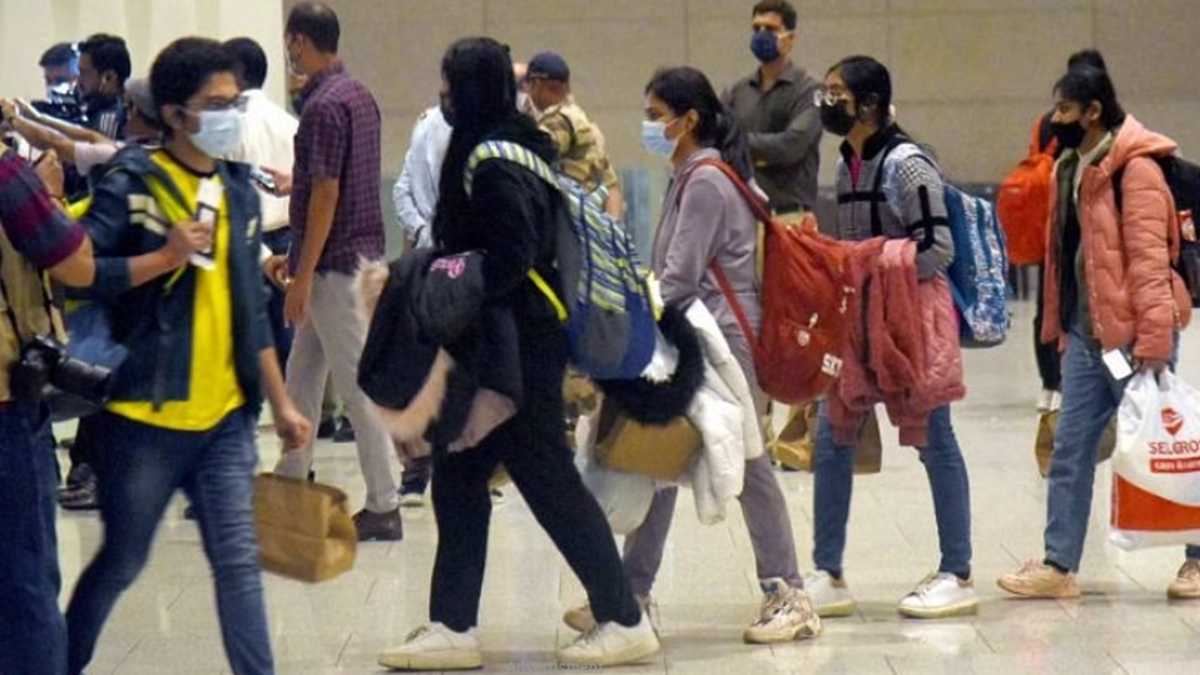The family of four, Praveen Chaudhary, 50, his wife Diksha, 45, and their children, Vidhi, 23, and Mitkumar, 20, attempted to enter the US from Canada by boat across the St. Lawrence River, police said. They are believed to have reached Canada on a tourist visa in February
When US authorities announced that the four bodies recovered from the St. Lawrence River in Akwesasne, a Mohawk reserve between the Canada-US border, were of people who came from a village in the Mehsana district of Gujarat, in western India, another case of illegal immigration came into the spotlight, reported dw.com.
The family of four, Praveen Chaudhary, 50, his wife Diksha, 45, and their children, Vidhi, 23, and Mitkumar, 20, attempted to enter the US from Canada by boat across the St. Lawrence River, police said. They are believed to have reached Canada on a tourist visa in February.
“Many fall prey to illegal immigration rackets. These trafficking syndicates lure them with promises and charge hefty sums. We had busted quite a few but new ones keep cropping up,” Gujarat’s former Director of police, Ashish Bhatia, told DW.
“The rush to escape is strong. People here are willing to spend any amount of money to somehow reach the US where the large and powerful network of the Patel community takes care of them,” sociologist Gaurang Jani, who teaches at the Gujarat University in Ahmedabad, told DW.
The Gujarat government is mulling whether to introduce legislation to go against smugglers who pose as travel agents to lure vulnerable people. However, officials say this would take time.
“Can you imagine the number of people who have managed to cross over? What we know are instances of people who die or are detained by foreign immigration and border police. It is the most lucrative trade and people are willing to chance it,” a senior intelligence official, who requested anonymity, was quoted by DW.
The latest tragedy echoes the case of the Patel family from the Kalol district of Gandhinagar. The family of four froze to death in southern Manitoba in January last year, while allegedly attempting to illegally cross over to the US. They were reportedly separated in a blizzard from a larger group of Indian nationals who managed to cross over in sub-zero temperatures.
“We arrested two travel agents in connection with the Patel incident. The agents had sent 11 persons, including the Patel family, to illegally enter the USA. They were responsible for arranging the Indian side of the travel and informing the group of whom they would meet up with in the USA once they crossed the border,” Deputy Commissioner of Police (Crime) Chaitanya Mandalik told DW.
The incidents have put a spotlight on human smuggling operations involving Indian migrants, especially from Gujarat, using Canada and Mexico as transit points. Human smugglers make false promises about easy escapes, without providing warnings about the risks involved.
Gujarat police probing human smuggling cases said smugglers receive help from Punjabi counterparts to facilitate illegal entry into the US. “From the initial interrogation of agents we have arrested, they charge $70,000-$75,000 (€64,000- €69,000) for each individual. The agents usually map the road to the US via Canada or through the Turkey-Mexico route,” said Mandalik. The US Census Bureau data estimates that around 587,000 undocumented Indian immigrants currently live in the US.
Thousands from Gujarat’s Patidar or Patel community have tried to undertake precarious journeys through dense forests, deserts and risky water channels to reach the US in search of better lives and the “American dream”.
“The rush to escape is strong. People here are willing to spend any amount of money to somehow reach the US where the large and powerful network of the Patel community takes care of them,” sociologist Gaurang Jani, who teaches at the Gujarat University in Ahmedabad, told DW.
“Once they have reached their destination, there is a huge support structure from the community. They do not mind taking on menial jobs but the goal is to reach the US,” added Jani.
*********************************************************
Readers
These are extraordinary times. All of us have to rely on high-impact, trustworthy journalism. And this is especially true of the Indian Diaspora. Members of the Indian community overseas cannot be fed with inaccurate news.
Pravasi Samwad is a venture that has no shareholders. It is the result of an impassioned initiative of a handful of Indian journalists spread around the world. We have taken the small step forward with the pledge to provide news with accuracy, free from political and commercial influence. Our aim is to keep you, our readers, informed about developments at ‘home’ and across the world that affect you.
Please help us to keep our journalism independent and free.
In these difficult times, to run a news website requires finances. While every contribution, big or small, will makes a difference, we request our readers to put us in touch with advertisers worldwide. It will be a great help.
For more information: pravasisamwad00@gmail.com











